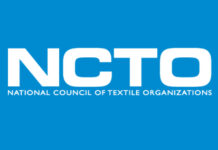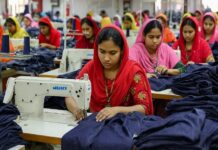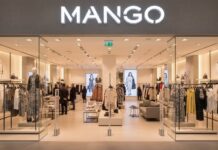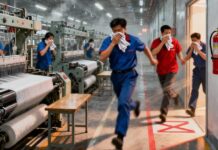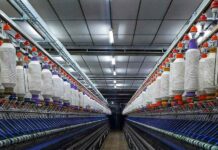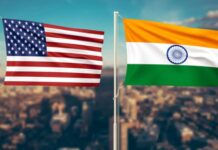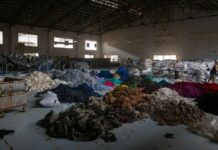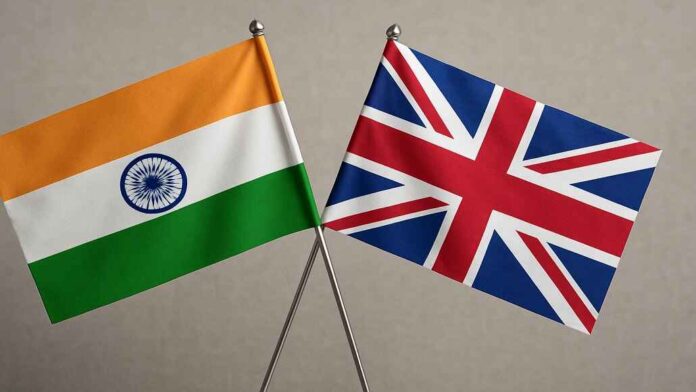A new free trade agreement (FTA) between India and the UK is expected to offer mutually beneficial opportunities, particularly in the fashion sectors of both nations. Indian trade specialists believe this pact could significantly enhance the global standing of their fashion industries.
At a recent roundtable in London aimed at boosting the apparel and textile trade between the two countries, Vikram Doraiswami, India’s High Commissioner to the UK, remarked, “The opportunity for us to work together to manufacture for the world is considerable.”
He added, “The diversity present in the Indian product ecosystem is unmatched by any other country globally. We are one of the few nations capable of supplying everything from cotton cultivation to finished goods.”
Doraiswami emphasized that collaborating with the UK could help Indian manufacturers elevate their market positioning, describing the FTA as a key gateway to achieving this.
Concluded in July of this year, the Free Trade Agreement is seen by Doraiswami as a significant opportunity once properly leveraged.
Sudhir Sekhri, chairman of the Apparel Export Promotion Council (AEPC) in India, anticipates that the agreement will be operational by the end of the financial year, pending approval from the UK Parliament.
However, he noted, “The speed of implementation ultimately rests with the buyers here, as it is up to them to urge their government to expedite parliamentary approval; our cabinet has already given its assent.”
Sekhri forecasts that India’s textile and apparel exports to the UK could increase by at least 2.5 times over the next three years, positioning India as the UK’s second-largest supplier.
Both Doraiswami and Sekhri are optimistic that once executed, the agreement will serve as a foundation, not a limitation, for future expansion.
“It represents an opportunity for us to strengthen our partnership and make India and the UK key players in the global market,” Doraiswami stated.
He also suggested, “The UK should view this partnership as a chance to engage not just in a bilateral context but to leverage our collaboration for a broader European market. We should aspire to be partners in a larger global initiative, which is entirely feasible today, and something I hope we can accomplish with your engagement in the near future.”
Doraiswami highlighted the advantages of aligning with the UK fashion industry, which is attuned to market trends, buyer preferences, and evolving consumer demands. He pointed out that the UK drives innovation in areas such as sustainability, new materials, and product design.
“Partnerships that focus on producing for the premium market are essential for India’s progress,” he continued.
He also sees potential in collaborating on sustainable fabrics and technical textiles for the sports and athleisure market, noting, “This presents an opportunity for us to work with UK manufacturers serving the global sportswear sector.”
India’s Ministry of Textiles trade advisor, Shubhra Agarwal, argues that investing in India’s apparel and textiles sector is a clear choice in the long run, as India possesses a complete value chain and the largest, youngest workforce globally.
“Coming to India is imperative; delaying this decision is not an option,” she asserted.
Agarwal identified multiple avenues for collaboration, including technological partnerships, joint R&D efforts between Indian and UK textile manufacturers, and strategic sourcing initiatives. She believes these collaborations could also involve retail brands and buying houses in sourcing from India.
Doraiswami concurred, noting the significant growth potential in India’s domestic fashion and textile market for both Indian and UK manufacturers.
He humorously remarked that a projected $250 billion domestic textile market by 2030 is “not to be disregarded” and presents a substantial opportunity for collaboration.
He explained, “Today, India showcases remarkable growth in both high-end and fast fashion segments. There are domestic brands owned by some of our largest business groups in the fast fashion industry, alongside numerous international brands, all of which are well-represented in India.”
He further emphasized that the competition is fierce for this scale of production, extending beyond just major metropolitan areas, as each state capital now hosts retailers offering these products.
Additionally, with an increasing trend towards online shopping supported by warehouses in larger Indian cities, he stated, “The scale of opportunity here is massive.”
From a UK sourcing perspective, Sekhri pointed out that fast fashion retailers such as Primark, ASOS, and Boohoo are looking to India for innovative solutions that align with their commitment to quality and sustainability.
He remarked, “These principles are central to India’s advancement in textiles and apparel manufacturing, showcasing our progress in eco-friendly materials, native raw materials, and adherence to exemplary ESG management practices.”
India’s textile sector is experiencing transformative growth fueled by robust governmental initiatives and private sector innovation that lay the groundwork for a globally competitive industry.
For instance, the Production Linked Incentives (PLI) Scheme for Textiles promotes the manufacture of man-made fibre fabrics, apparel, and technical textiles, catalyzing investments in high-value materials to meet evolving global demands.
Additionally, the Pradhan Mantri Mega Integrated Textile Region and Apparel Parks (PM-MITRA) Scheme is establishing a cohesive textiles value chain through seven mega textile parks across India with an anticipated investment of $10 billion.
Sekhri noted that this initiative will create state-of-the-art facilities and integrated textile hubs equipped with top-tier infrastructure to optimize production, foster innovation, and attract significant investments.
Vijay Kumar Agarwal, chairman of the Cotton Textile Export Promotion Council (TEXPROCIL), emphasized the importance of India’s blockchain traceability system for cotton.
“We have a comprehensive system that traces cotton from the farm to the factory that produces the final product, along with a QR system that provides complete transparency,” he explained.
Dr. Siddhartha Rajagopal, TEXPROCIL’s executive director, mentioned that India’s platform is unique in offering real-time reports on cotton status, noting the rigorous testing involved.
Neelam Shami Rao, Secretary of India’s Ministry of Textiles, added that embracing technology is crucial for India’s collaboration with the UK and its goal of achieving $100 billion in textile exports by 2030.
She described, “We have developed a sophisticated forecasting tool through the National Institute of Fashion Technology (NIFT), called VisioNxt. This tool allows us to input trends and develop models to simulate potential designs and colors for upcoming seasons.”



